19 December, 2014 will go done in history as the date when India’s most successful film hit the silver screens, starring arguably the most versatile actor on celluloid – Aamir Khan – pulling off a full-monty.
The storyline of the movie revolves around the character of ‘PK’ – an alien who comes in search of life on Earth (referred to as ‘Gola’) – and in the process, learns how humans are more driven by religious beliefs and the fear of god makes them believe in performing ‘tasks’ that are instructed by ‘messengers of god’ to please the lord.
The film had a lot of visual appeal but not all that meets the eye is real; AnimationXpress.com’s Sidharth Iyer and Vishaka Chakrapani recently met up with the brains behind this venture – Viral Thakkar, creative head and partner, Riva VFX and Animation; along with Rajkumar (Raju) Hirani, director and writer of PK – to really understand what was the idea behind this script and how VFX played the ‘invisible’ actor in the film.
Excerpts:-
How did the association on ‘PK’ come about?
Viral: In the beginning of 2014 Raju Hirani’s office called me as Rakeysh Omprakash Mehra suggested they meet me once sighting their need on certain aspects of visual effects on PK. Rajuji had this idea about the opening sequence and he wanted to see if I could get his vision across on the big screen. He said he wanted a certain look for the cloud and I could visualize what he was looking for; so I did a few tests and we did the entire research and in a week’s time I presented a rough cut of how the cloud could look like. And he liked it so much that from there on we started working together on the rest of the movie.
Raju: What we definitely wanted in the film was the cloud effect in the opening sequence where the mother ship comes to Earth. I didn’t want to show a spaceship right in the beginning because it’s done to death. Whenever an alien ship lands, you have red and blue lights blinking and all of them look the same. At some stage we thought camouflaging the spaceship with a cloud would bring some level of authenticity to the scene, but we weren’t reaching anywhere and someone told me about Viral’s work. He showed me a very rough cut of how a spaceship will look with clouds around it and that seemed really interesting. That’s how our journey started.
How many shots did you execute and what were the challenges you had to face?
Viral: We executed around 700 shots and most of them are invisible in the movie. We at Riva VFX & Animation want to focus more on photo real VFX. But the opening sequence in PK isn’t a photo real one as it’s more of a special effect. Apart from the opening sequence, the rest of the movie has many scenes that are photo real. The other major sequence was the train blast, which was complicated because we had to create everything from scratch.
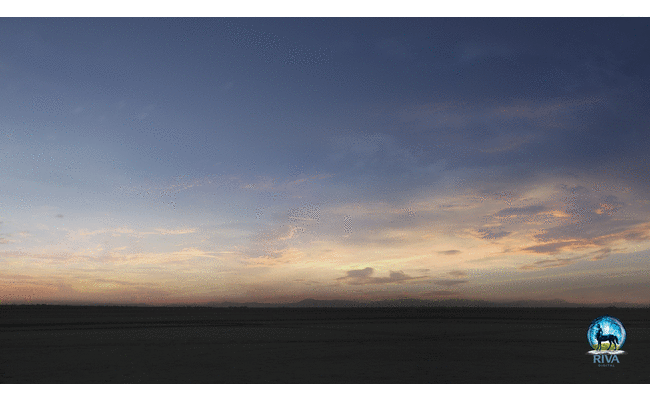
What was the thought behind the opening sequence?
Viral: The idea was that there would be a cloud that will come from outer space and then reaches Rajasthan. There was something that wasn’t working for Rajuji and even I was not too comfortable with the idea. In one of the meetings I bounced off the idea of how the mother ship could look like when inside the cloud. It’s camouflaged at first and once it’s closer to earth, the ship takes a little more defined shape. We tried our level best so it doesn’t look like the spaceships in earlier movies and he was happy with it.
The spaceship is once again seen in the end. The end sequence was not a part of the film but was shot two weeks prior the release of the film. Rajuji thought that because Aamir Khan went back, it would leave an empty feeling among the moviegoers. And he wanted to get an aspect that he would come back. So Ranbir Kapoor came into the picture, it was his idea to end the film on a happy note and personally I felt it worked well too.
Raju: The cloud sequence was one of the most difficult for us. We were battling how to get the cloud right. The brief I remember telling Viral was that it should be a happy cloud. It shouldn’t look too ominous and give the feeling that aliens are attacking Earth. It took us a very long time to find the right cloud and in that entire sequence, nothing was shot and everything was created using CG and lot of still images were used as reference. I’ve got a very good response to the complete sequence, with many going on to say that it begins like a Hollywood film; so all that’s thanks to Riva and Viral.
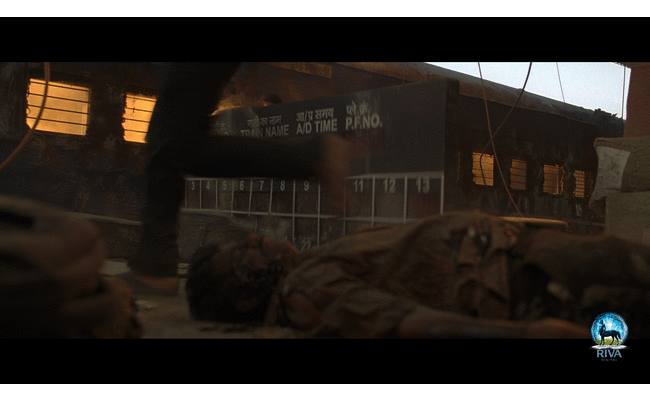
How did you execute the blast scene?
Viral: We shot the sequence on a platform in Khopoli which was blocked for 1.5 days. The initial plan was to shoot it for 4-5 days. I got on board and I worked on a fresh start and made it simpler and producer friendly. It didn’t make sense shooting for 3-4 days and increase the production cost unnecessarily.
We had an engine and two-three bogies attached to it. We couldn’t take fire on the set and so we called for smoke machines. We had the smoke machine inside the bogey and warm orange lights inside so it looks like there is already fire inside and it also looked convincing. Only thing we had to do was to add CG fire. The initial plan was to shoot fire as an element against black plates but that didn’t look convincing and so we ended up simulating fire using CG.
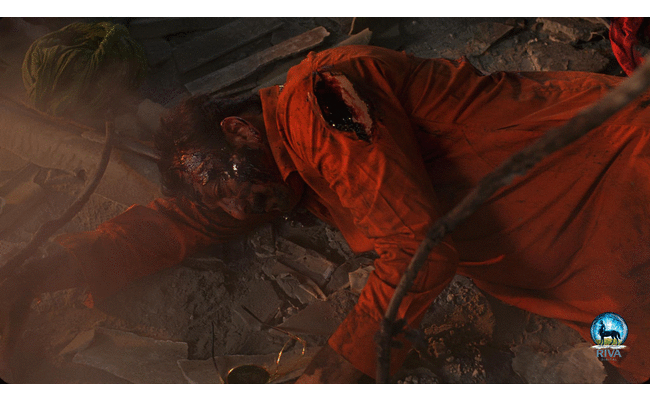
There is a close up of Sanjay Dutt and there is an explosion which is CG. The station needed to look like it was located in Delhi thus we had to do some extension on the roof. In the first wide shot, we simulated CG people running helter-skelter because in the master plate they didn’t have people running. A lot of bids flying were also added later. The indicator falling, the debris falling and the signage were also done in CG.
Previz, schedule and delivery is what is currently lacking in the industry. How did you ensure you stuck to your deadlines and also got involved in the creative process?
Viral: We want to get involved at a nascent stage as far as script writing is concerned. The blast scene looks great on screen as well and I wanted to show that it can be done professionally if it is planned well and save the production cost. We did a rough edit at our stage and started building it further. And by the time we reached the set we had the previz and we followed it exactly.
As a company we want to get into a direction that we end up saving money for producers and do work professionally. I will ensure to get into the producer’s shoes and deliver the VFX as per the requirement and bring my expertise to the table while I am doing so. That’s the intent.
Hirani: I’ve been cautious with special effects till now. With Viral, for anything that I asked ‘is it possible’ he would only say ‘yes it is’. In this journey of a year we started thinking more on using VFX. It was an education to see how we have grown in technology and special effects. I thought why I should be complicating my shoots. I can shoot simply and all this can be achieved in post production.
What kind of processes were involved and how many artists?
Viral: Over the last 6-8 months we had 100 artists working on the film. Apart from the major sequences, there is an entire chunk of shots which is VFX. There is a shot where Aamir is among a crowd of devotees. The Manka sequence was shot against the green screen, where you see Aamir Khan running towards the stage where Saurabh Shukla is giving a sermon. The Muharram scene was also shot earlier on green screen with some people and then composited him into that master plate.
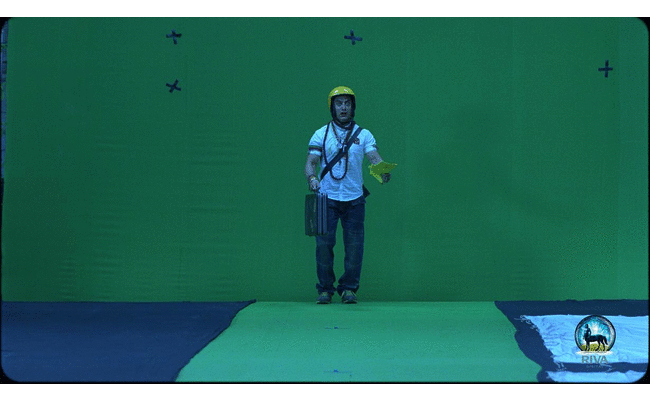
This sequence was something which I told Rajuji that we can make Aamir a part of the 100,000 crowd. He asked me if it’s possible and I said why not. So we ended up doing a lot of on-set compositing as well. As and when we did green screen scenes, I did a rough composite there. They were kind of blown away including Aamir in terms of how such things can be easily achieved nowadays.
In the film Aamir’s ear is entirely CG. When I was taking the texture and how light scatters on it, he was explaining that he has this one particular cartilage which is hard to find in humans. So he explained that he wanted that cartilage to be visible. And we replicated his ear’s exact size and texture in high resolution.
The ears throughout the film had the same kind of look. In order to get them out a bit he had a prosthetic support that had to be removed which couldn’t just be done by using simple paint technique. We had to create the entire ear in CG and we had to 3D track the head too. That was a large chunk of the film.
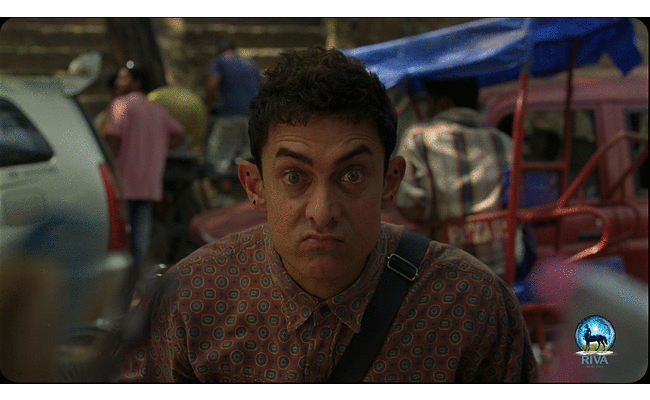
Raju: We wanted Aamir to look human. We didn’t want a creature with six hands. Someone who will look like us but still stand out in the crowd that was the brief; so we had to do minimalistic work on his look. One of the early thoughts was to protrude his ears. Aamir anyway has ears that are slightly protruding and we made him wear a contraption which had to be removed in many shots and I believe Viral and the team at Riva had a tough job to execute it.
How was it working with Aamir?
Viral: He is fantastic. Towards the end he managed to change the actual ear position due to constant wearing of the prosthetic. His ears were jutting out by the end of the movie. It shows how perfect he is.
Are you happy with the way the film turned out finally?
Viral: He’s a gem of a person. The way he supported and trusted the VFX supervisor, I don’t think anyone else would do that. We would probably want to keep working with him. I’m happy to be a part of a film that’s crossed Rs 600 crore globally in box-office numbers.
Hirani: I’ve had an extremely good experience because I was never told a ‘no’. I think I found a friend in Viral and I hope to work with him forever.
